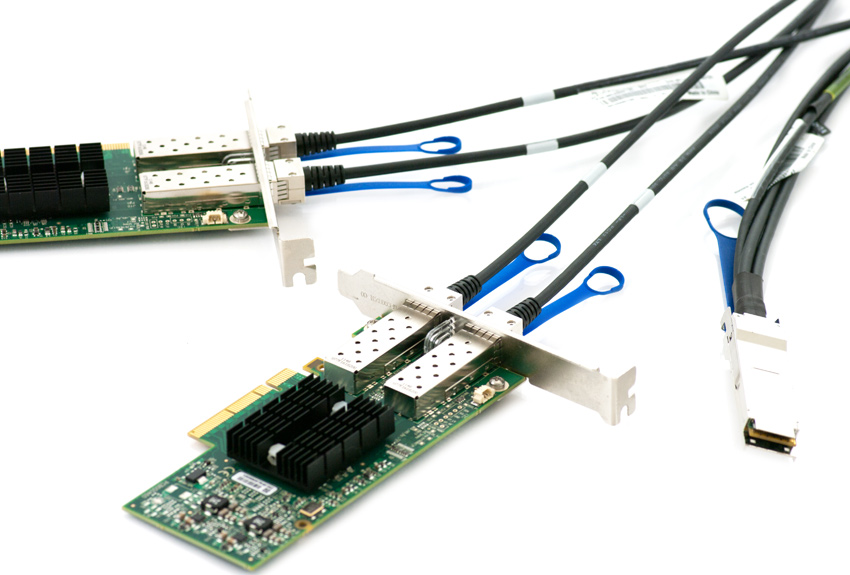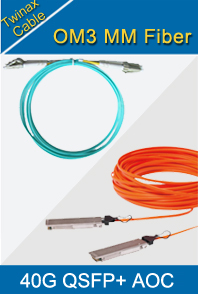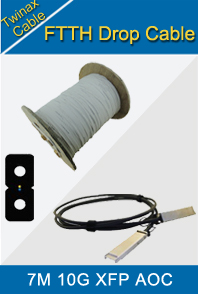-

- Sopto Home
-

- Special Topic
-

- Twinax Cable Knowledge
-

- Why 10 Gigabit Today?
Twinax Cable Knowledge
- Cable Labeling as Part of Data Center Management
- How to Correctly Run cables On Servers in a Data Center?
- 4 Realities You Should Consider 10G Ethernet for Your Business
- Is it finally the end of copper?
- Why We Need Both 40G and 100G Ethernet Cable?
- What is Twisted Pair Cable?
- Benefits of Twisted Pair Cable Construction
- Why Copper Is Used in Cables?
- A Brief Look at Ethernet Cable Construction
SOPTO Special Topic
Certificate



Guarantee
Except products belongs to Bargain Shop section, all products are warranted by SOPTO only to purchasers for resale or for use in business or original equipment manufacturer, against defects in workmanship or materials under normal use (consumables, normal tear and wear excluded) for one year after date of purchase from SOPTO, unless otherwise stated...
Return Policies
Defective products will be accepted for exchange, at our discretion, within 14 days from receipt. Buyer might be requested to return the defective products to SOPTO for verification or authorized service location, as SOPTO designated, shipping costs prepaid. .....
Applications
 Twinax Cables are mainly used with PCI or PCI-E Card for the short distance interconnection in the server room.
Twinax Cables are mainly used with PCI or PCI-E Card for the short distance interconnection in the server room.
SOPTO Products
- Fiber Optic Transceiver Module
- High Speed Cable
- Fiber Optical Cable
- Fiber Optical Patch Cords
- Splitter CWDM DWDM
- PON Solution
- FTTH Box ODF Closure
- PCI-E Network Card
- Network Cables
- Fiber Optical Adapter
- Fiber Optical Attenuator
- Fiber Media Converter
- PDH Multiplexers
- Protocol Converter
- Digital Video Multiplexer
- Fiber Optical Tools
- Compatible
Related Products
Performance Feature
Stable Transmission Speed
Reliable Transmission
Various Length Selection
Wider Operating Temperature
Good for HPC
Good for Data Center
Twinax Cable Knowledge
Recommended


Why 10 Gigabit Today?
Most LAN infrastructures employ a mixture of copper and fiber premises wiring. Many companies have legacy fiber connectivity for backbone links with copper wiring in place for wiring closets. These legacy backbones are generally sufficient as long as there are no demands for greater network performance or application bandwidth.
However, as companies grow their networks and support new applications and traffic types, they are increasingly migrating to gigabit links. With gigabit connectivity widely available for gigabit-based PCs, servers, data center storage and high-end computing, gigabit technology is emerging as the connection of choice for many organizations.
So why is there a need for ten times gigabit performance, or 10GbE, today?
More for Less
In the past, 10GbE was neither necessary nor affordable. As with most burgeoning technologies, those dynamics are changing. Technological advancements have resulted in higher performance at lower costs. As such, gigabit and 10GbE bandwidth has become affordable for most companies.
Regardless of cost, there is also a distinct need. An increasing number of applications require considerable bandwidth to support the transfer and streaming of large data, video and audio files. As bandwidth-intensive applications and latency sensitive traffic types become ubiquitous, so does the need to support and transport them.
In addition, many companies are seeking to “future proof” their network to ensure they can support emerging technologies and preserve their initial investments. In the past, fiber and wire cabling systems were installed with a 10-year lifespan in mind. However, with the rapid, ongoing evolution of network technologies, companies must be concerned with their current infrastructure’s ability to keep pace.
Costs associated with re-cabling a network can be exorbitant and organizations should take precautions to ensure their cabling systems can last well into the future. 10GbE provides the very best assurance for being able to support forthcoming technologies and delivers utmost investment protection.
Data Centers
For many institutions – especially those that utilize automated trading – uptime and response time is critical. Delays longer than a second can be exceedingly costly. With servers now being able to transmit near gigabit bandwidth and network downtime proving catastrophic, today’s enterprise data centers need extended bandwidth.
10GbE is an ideal technology to move large amounts of data quickly. The bandwidth it provides in conjunction with server consolidation is highly advantageous for Web caching, real-time application response, parallel processing and storage.
Campus Backbone Links
Many organizations wish to connect their campus buildings with high-speed links. Carrier-based services offload the burden of establishing and maintaining a 10GbE backbone, but limit flexibility and oftentimes prove too costly with expensive, unending monthly bills. This ongoing expense can be overwhelming for educational institutions, government organizations and hospitals as well as enterprises that do not have a set budget year to year
Establishing a 10GbE campus backbone is a one-time expense that can provide significant cost savings when compared to monthly communications link bills.

Figure 1 Enterprise Data Center with 10GbE Backbone
Metro Area Transmission
Many companies also need to send and receive data beyond their campus, oftentimes in the form of large or streaming files that require high-speed links. Traditionally an area for carriers, 10GbE now offers an attractive alternative to costly monthly charges for long distance data transmission.
Many carriers offer expensive transmission services utilizing SONET OC-48 or OC-192c standards. These are considered “lit” services where a company has to add protocol conversion to be able to link from end to end.
Conversely, “un-lit” fiber – called Dark Fiber – is now being offered by carriers to companies able to provide their own connectivity. In these cases, routing switches supporting the 10GbE standard can provide their own transmission. Taking advantage of 10GbE performance in tandem with carriers’ Dark Fiber services can drastically reduce costs when compared to “lit” transmission services.
Sopto supplies high quality twinax cables, like SFP+ DAC, XFP to XFP cables, QSFP+ cables and so on for Data Center and HPC 10 Gigabit applications. For the newest quotes, please contact a Sopto representative by calling 86-755-36946668, or by sending an email to info@sopto.com.



